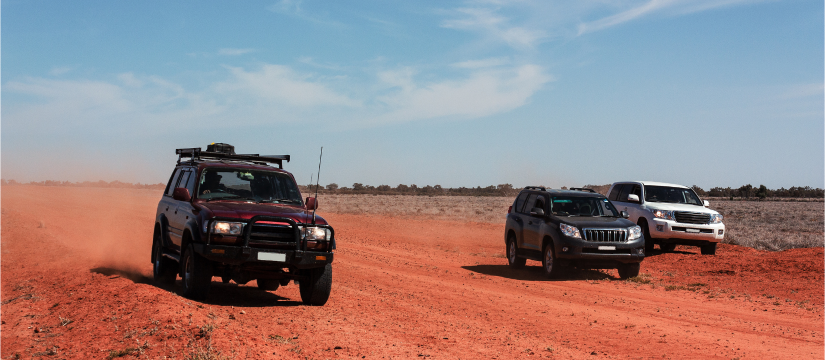
What’s the difference between 4WD, AWD and SUVs and which one is right for you?
While the popularity of sedans (think Holden Commodore, Toyota Camry and Ford Falcon) has been on the decline, there has been an incredible rise in popularity of SUVs, AWDs and 4WDs. In fact, of the top five selling vehicles in Australia in 2019, three fell into these categories.
As design and technology improves, the clear distinction between SUVs, AWDs and 4WDs is getting blurred. We’ll add a little clarity and maybe help you decide what exciting new vehicle you’ll be driving around in.
SUV
Sport Utility Vehicles evolved from tough, off-road vehicles and so sit higher off the ground than regular passenger vehicles and are styled to look more rugged. They also come in a range of sizes from small to medium, large and extra large.
Though they can be four-wheel drive or all-wheel drive, many SUVs are actually two-wheel drive and are not actually designed for off-road driving. Examples of two-wheel drive SUVs you might see around are the Mazda CX-5, Kia Sportage and Hyundai Tucson.
SUVs were first designed for people that liked a little weekend adventure such as mountain biking, fishing and camping. They have since become popular with families, city dwellers, older people, almost everyone that drives. In fact, of the four biggest selling car categories, three are made up of SUVs (small, medium and large).
SUVs are popular for a few reasons; they sit higher off the road so it is easy to get into and out of and also for putting a child into a child seat and they often have more passenger room and boot space. In addition, many people like the feeling of safety they get from sitting higher up in a bigger vehicle - though bigger doesn’t always mean safer.
AWD
All-wheel-drive vehicles drive as a result of the engine sending power to all four wheels rather than just the front or back wheels (two wheel drive). AWDs can be full-time AWD which means that all four wheels are being powered continuously. They can also be part-time all-wheel-drive and only use AWD when necessary (when extra traction is needed). Most often, part-time AWDs are in two-wheel-drive mode which conserves fuel. Examples of vehicles that use this type of system are Audi and Subaru.
Whether the vehicle is full-time or part-time AWD, the driver never has to choose to engage the system. Full-time is always on and with part-time, the vehicle cleverly senses when the car needs more grip and automatically engages the AWD.
While AWDs perform well in many conditions including dirt and snow, they are not considered ‘serious enough’ by many 4WD enthusiasts who prefer the ability to engage all wheel drive at their discretion. This perception has changed somewhat as the AWD functionality evolves and offers in some cases excellent off-road capability.
Generally speaking, if you like the attributes of an SUV, you’d like the confidence of a little extra traction when needed and you’re not a serious off-roader, then AWD is the perfect fit for you.
4WD
Four-wheel drive is used to describe those SUVs that are more likely to be used for off-roading (think driving on sand, through a creek bed or up a steep dirt track). As the name suggests, power from the engine goes to all four wheels to give the vehicle extra traction. When you think of 4WDs, you might be thinking Nissan Patrol, Toyota Hilux or Ford Ranger.
There are different types of 4WD systems; some are engaged by the driver only after stopping the vehicle, some can be switched on at speed from the press of a button and some are engaged permanently (blurring the lines between 4WD and AWD).
Traditionally, 4WDs would be characterised by more rugged styling like older Jeeps and Land Rovers with less creature comforts - today however, some 4WDs are supremely luxurious and would be as at home on the streets of Toorak, Dalkeith and Double Bay as they would be going up the side of a mountain.
If you like the size and feel of an SUV and you think you’d like the option of getting off the beaten track, then a 4WD could be right up your alley (or hillside goat track). You might also want to consider the extra power and traction a 4WD provides if you’re going to tow a boat or caravan.
This content is intended to be general in nature and is not financial or professional advice. We recommend you obtain independent professional advice relevant to your circumstances, before making any financial or commercial decisions.



